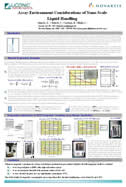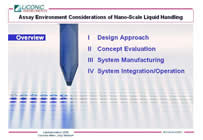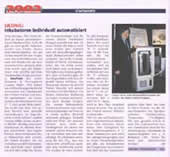|
A t that time existing commercial incubators had pneumatic cylinders on
the main door to facilitate accessing,. The new innovation for the first Automated Precision Incubator would be the addition of a small door at the rear for remote accessing. Keeping environmental fluctuations to a minimum. The large front-side door would still remain in use for User Access and maintenance, thus dividing the activities into a robot side and a user side. t that time existing commercial incubators had pneumatic cylinders on
the main door to facilitate accessing,. The new innovation for the first Automated Precision Incubator would be the addition of a small door at the rear for remote accessing. Keeping environmental fluctuations to a minimum. The large front-side door would still remain in use for User Access and maintenance, thus dividing the activities into a robot side and a user side.
Other improvements on the existing commercial incub ators included an external carousel drive that was capable of positioning the carrousel within 1/10 of a mm with its full weight, as well as a play free gearbox. The incubator chamber had a polished stainles
s steel interior. It could also allow automatic sterilisation.
ators included an external carousel drive that was capable of positioning the carrousel within 1/10 of a mm with its full weight, as well as a play free gearbox. The incubator chamber had a polished stainles
s steel interior. It could also allow automatic sterilisation.
At that time existing commercial incubators had pneumatic cylinders on
the main door to facilitate accessing,. The new innovation for the first Automated Precision Incubator would be the addition of a small door at the rear for remote accessing. Keeping environmental fluctuations to a minimum. The large front-side door would still remain in use for User Access and maintenance, thus dividing the activities into a robot side and a user side.
|
|
|
|
Other i
mprovements on the existing commercial incubators included an external carousel drive that was capable of positioning the carrousel  within 1/
10 of a mm with its full weight, as well as a play free gearbox. The incubator chamber had a polished stainless steel interior. It could also allow automatic sterilisation.
within 1/
10 of a mm with its full weight, as well as a play free gearbox. The incubator chamber had a polished stainless steel interior. It could also allow automatic sterilisation.
The results of these innovations were far better than expected. A climate with as much as 98% humidity could be attained / maintained. Thus in 1991. The first of the High Throughput Screening (HTS) incubators in the world was produced. Several com panies who were involved in the HTS projects requested instruments, one of them being Scitek. Scitek was the first to distribute the automated incubator world wide and give it it's first showing at the ICAR (International Conf
erence on Automation, Robotics, and Artificial Intelligence applied to Analytical Chemistry and Laboratory Medicine) in Montreux in 1995.
panies who were involved in the HTS projects requested instruments, one of them being Scitek. Scitek was the first to distribute the automated incubator world wide and give it it's first showing at the ICAR (International Conf
erence on Automation, Robotics, and Artificial Intelligence applied to Analytical Chemistry and Laboratory Medicine) in Montreux in 1995.
During the development of the HTS system a demand for a cooled version arose and following a short delay after the production of the original version a cooled unit was produced. Another first in the world of Incub
ators. |
|

